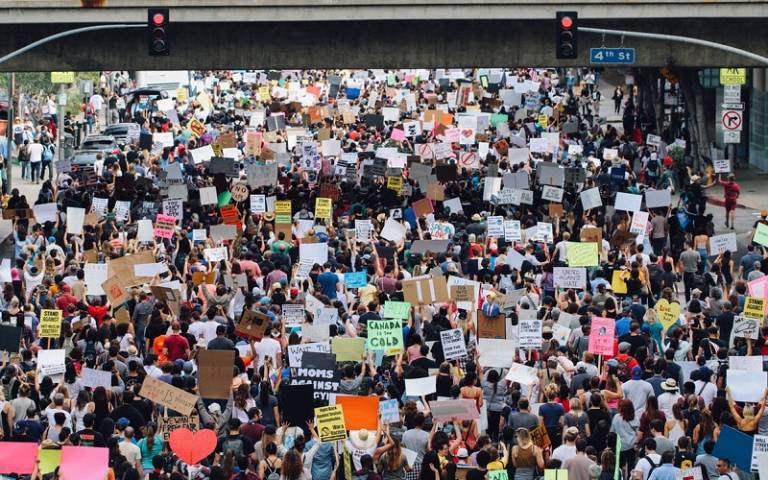Civic Activism Unleashed
7 June 2019
Amelie Bahr (MSc Global Governance and Ethics) on a GGI keynote lecture with Richard Youngs, Senior Associate at Carnegie Europe and Professor of International and European Politics at Warwick University.

Around the world, civic activism is making headlines. Within the past few months alone, protestors voiced their demands for a civilian government in Sudan, Israelis organized a mass rally against granting immunity to Prime Minister Benjamin Netanyahu and, closer to home, Extinction Rebellion occupied London’s bridges in demand for greater climate action. These examples are emblematic of broader change within civic activism, or so Richard Youngs argued in a recent keynote lecture at the Global Governance Institute. Civic activism is now more ubiquitous than perhaps ever before, no longer concentrated in specific regions but spanning the globe. It has also taken on new forms, which are increasingly fluid and sporadic. Indeed, these changes are so significant that they call for a reconceptualization of the very idea of civic activism, according to Youngs.
Drivers of change
What are the main drivers behind what Youngs referred to as an ‘age of emerging civic activism’? On the one hand, Youngs cited frustration with government and party politics as a primary cause for activism today. In addition, the clampdown by many governments on established civil society organizations has prompted the formation of new movements whose organizational structures evade governmental constraints, but still allow for the pursuit of particular political agendas.
On the other hand, the new activism also emerges from disenchantment with the work of formal NGOs which often lack legitimacy in local contexts as they appear too removed from grassroots concerns. However, Youngs stressed that rather than rendering NGOs obsolete, the new activist challenge helps them rethink their own purpose, rebuild their relationship with local communities and strengthen their accountability structures.
A new peak for protests
The surge in civic activism during the past decade is owed in large part to political protests, which Youngs described as a ‘structural feature’ of 21st century societies. These protests are often triggered by narrow, specific grievances such as urban development projects. As such they are distinct from earlier protest movements, which usually had a truly global outlook from the start, e.g. offering a direct critique of the global neoliberal system.
Today, while protest movements may later become vehicles of broader political change, their starting points are often decidedly local. Where they offer a critique of the global system, they do so indirectly by circumventing the latter’s constraints and providing solutions that work in their respective immediate contexts.
With regards to the aims they are pursuing, Youngs insisted that there is no one answer as to what today’s global protests are ‘about’. Whilst they constitute a potent political force, these protests do not follow a discernible push into one particular ideological direction and, more often than not, function as an umbrella for a range of goals and aspirations within a single movement. What they are changing, then, is not the balance between different ideological positions in absolute terms, but rather the battleground on which such positions are played out in citizen-state relations.
The aftermath: integration or fragmentation?
For all its ubiquity, how effective is this new activism at driving long-term change? While some protests have successfully pushed governments out of power, others have been ineffective or even counterproductive. However, Youngs pointed out that the most likely scenario is a mixed outcome, with governments making concessions on some issues but resisting the protestors’ broader challenge to power. This often constitutes a tactical choice on the part of government as it may contribute to a splintering of the protest movement.
Some may argue that even if the outcomes of protests are not always tangible, the unity they generate between different social groups is an end in itself. However, often this unity is short-lived, preventing protest movements from serving as a platform of ongoing mobilization and long-lasting political change.
Youngs argued that, at times, the limited effectiveness of protests may be due to their alignment as ‘anti-politics’, thus opposing any engagement with mainstream politics. However, some protest movements have picked up on this weakness and are now seeking to actively expand their scope of influence, for example by forming their own parties or partnering with NGOs.
As both activists and governments are learning from the past and increasing their leverage over each other, the precise impact of the former in the future appears uncertain. Yet as a compelling presence in both global governance and local politics, new forms of civic activism are likely here to stay and they deserve closer attention.
 Close
Close


